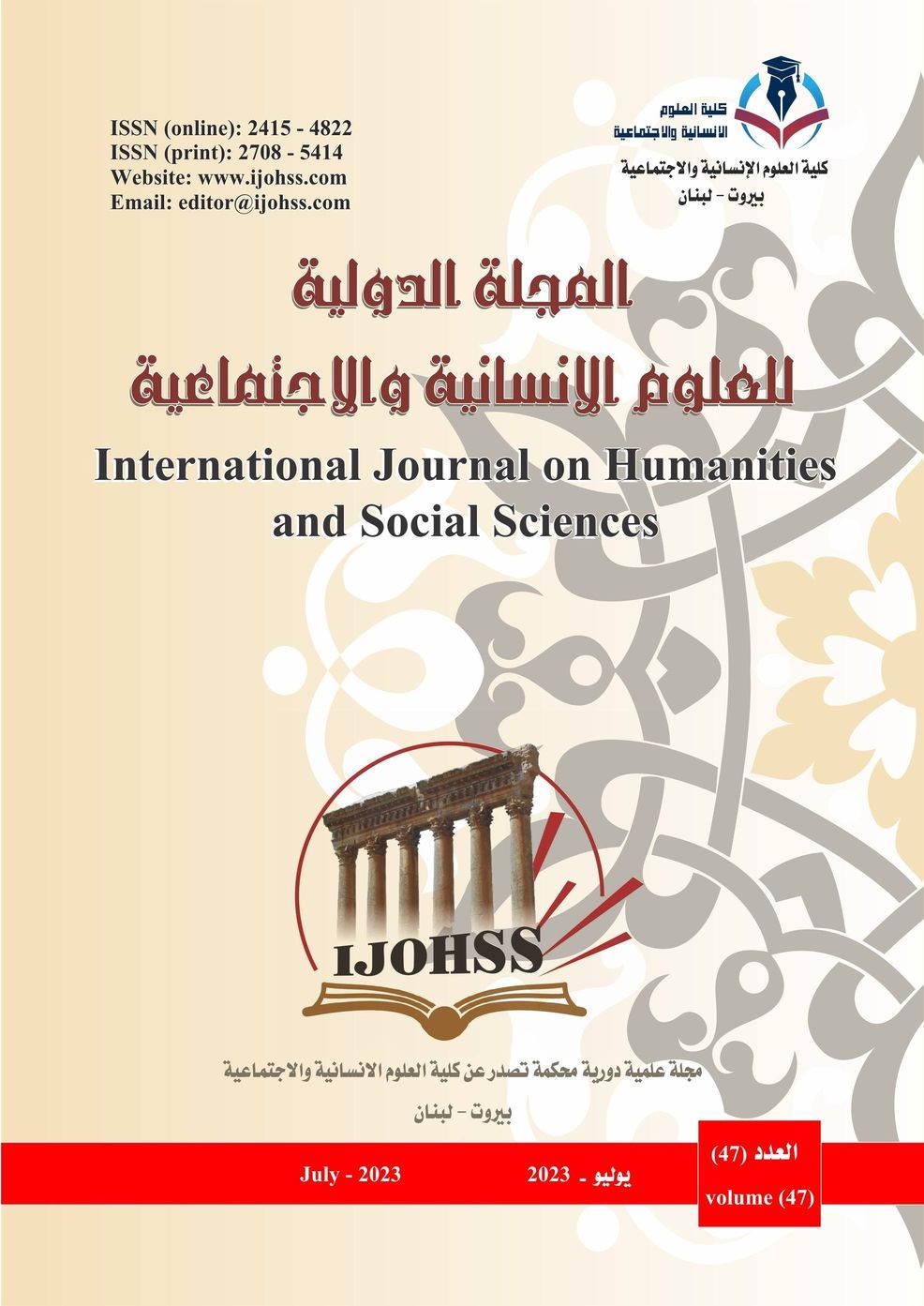The Steps of Language Formation in the Critical Pragmatic Arabic Approach of the Iraqi Theorist Abdulrazak Alghaliby
الملخص
We find Modernity in all aspects of life, and this is what we see in Western Societies and the emergence of several schools of criticism and literature, which is the topic that pertains to our research. The competition of that school, and an example of that, is the emergence of the Structuralism School, Deconstructionism School, and Formalism School, leading to the Arabic Pragmatic Theory, which is the focus of our study. The language and its sciences had their share of this development. The sciences of rhetoric, as well as criticism and its schools, developed until they reached Postmodernity. Arabic Pragmatic Theory(CPAA) is one of these modern literary and critical schools. In its foundations and rules are based on several important pillars, the most important of which is implicature, significance, and the signified aspect. Although sometimes the significance is absent, but the one who predicts it is the signified aspect, as well as it adopted Discourse in language and Perception that pours into the essence of the Concept, and (CPAA) as a scientific theory that took Ethics as an essential aspect in dealing with the Literary Text, whether poetry or narrative, and its difference from other critical theories is that , its reliance on the linguistic vocabulary and the connotations it carries in order that it may give the text strength and Aesthetics in terms of construction and Displacement, so as to provide the text with its elements affecting the reader and the recipient. The most important of these elements are the element of Suspense and the element of Surprise by showing, what is behind the lines and what is between them, and what is in the subsoil of the language.
المراجع
2. Alghaliby, A. (n.d.). Pragmatics in Action - first edition. 3, 371.
3. Alghaliby, A. (2016). The Importance of Communication in Teaching English Language. Book, 1, 145.
4. Alghaliby, A. (2019). Pragmatics between the Philosophical and Lingustic Perspective-The First Volume of the Pragmatic and Philosophical Encyclopedia. Book, 1, 437.
5. Alghaliby, A. K. Y.-A. J. A. F.-A. R. A. (2017). Assyab is going to die next day. Book, 96.
6. Alghaliby, A. O. (n.d.). Pragmatics and the Soverienity of The Arabic Geners. Book, 2, 311.
7. Alghaliby, A. O. (2021). Pragmatics and the Human Mind (first edit). The General Union Of the writers of Iraq.
8. Alghaliby, A. O. (2022). Pragmatics and the Critical Scientific Analysis. Book, 5, 344.
9. Bogen, J. E., & Bogen, G. M. (1976). Wernicke’s region--Where is it. Annals of the New York Academy of Sciences, 280, 834–843.
10. Einspruch, E. L., & Forman, B. D. (1985). Observations concerning research literature on neuro-linguistic programming. Journal of Counseling Psychology, 32(4), 589.
11. El Mogharbel, C., Laufs, I., Wenglorz, M., & Deutsch, W. (2003). The sounds in songs without words. Proceedings of the Fifth Triennial Conference of the European Society for the Cognitive Sciences of Music. Hanover: Institute for Research in Music Education Monograph, 6.
12. Guenther, F. H. (1995). Speech sound acquisition, coarticulation, and rate effects in a neural network model of speech production. Psychological Review, 102(3), 594.
13. Hulin, R., & Na, X. (2014). A study of Chomsky’s universal grammar in second language acquisition. International Journal on Studies in English Language and Literature, 2(12), 1–7.
14. Hw, & ang, HyosungLee, H.-Y. (2015). The effect of high variability phonetic training on the production of English vowels and consonants. ICPhS.
15. Ladefoged, P. (1973). The features of the larynx. Journal of Phonetics, 1(1), 73–83.
16. Mori, E., Yamadori, A., & Furumoto, M. (1989). Left precentral gyrus and Broca’s aphasia: a clinicopathologic study. Neurology, 39(1), 51.
17. Yahia, A. K. (n.d.). Critical Analysis in Fantasy and Scientific Literature in Abdul Razzaq Al-Ghalbi’s Pragmatic Theory. Book, 1, 244.
18. Yahia, A. K. (2021). Travel Literature in Pragmatic Perspective. Book, 1, 142.
19. Yahia, A. K. to A. A. (2022). Contemporary Arab Feminist Literature in Pragmatic Perspective. Book, 1, 144.
الحقوق الفكرية (c) 2023 Dr. Ahmed Muhsen Mashkour , Lect. Majid Dakhil Hammadi , Lect. Hayder Abdulrazak Oudah

هذا العمل مرخص حسب الرخصة Creative Commons Attribution-NonCommercial-NoDerivatives 4.0 International License.



